Betta enthusiasts are always excited to learn about new species of betta fish!
When most people think of betta fish, they picture the colorful Siamese fighting fish found in pet stores all over the world.
But the family-tree of betta fish extends far beyond the Siamese fighting fish.
Betta Mahachaiensis is a new blue iridescent green fish from the betta family. The species is mainly found in the Samut Sakhon province of Thailand.
Although Betta Mahachaiensis is a wild betta, it is quite similar to the domestic variety found in pet stores. Although, you likely won’t see Betta Mahachaiensis for sale in your pet stores and will need to get one from a reputable breeder.
Here’s what you need to know if you are considering adding a Betta Mahachaiensis to your tank.
| Betta mahachaiensis overview | |
| Appearance | Blue-green iridescent scales |
| Temperament | Aggressive |
| Length | Up to 5 inches |
Betta Mahachaiensis: a detailed overview
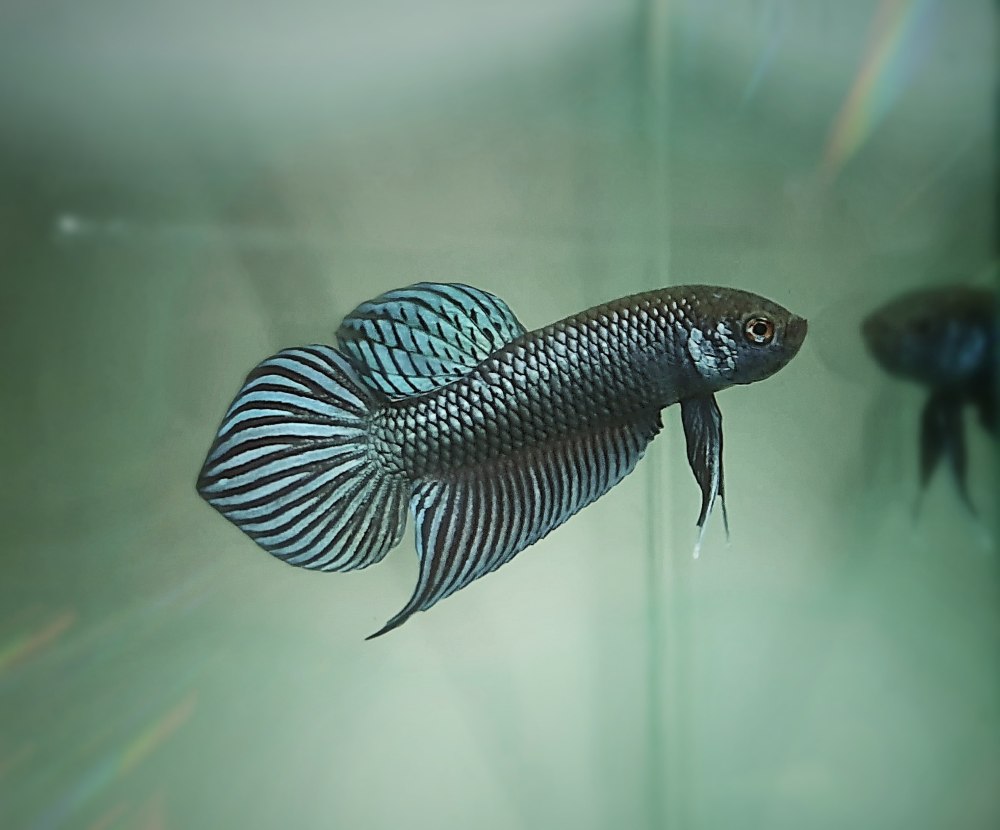
Betta Mahachaiensis is a wild betta fish, meaning they still live in the wild. The easiest way to differentiate between a wild betta from a domestic betta is in their appearance: wild bettas have more natural bluish-green vertical lines than domestic bettas.
See the differences between a domestic betta (top) and a domestic betta (bottom):

The natural habitat of a wild Betta Mahachaiensis is the Samut Sakhon province in the Southwest of Bangkok.
They enjoy living in pools, ponds, or swamps, and they especially love swimming around the nipa palm trees. Nipa palm trees have phytotelmata, which are small cavities filled with water. These are perfect hiding places for Betta Mahachaiensis.
This new species was discovered very recently when a team of researchers led by Dr. Kowasupat identified it and included it in the Betta family.
We’re about to get a bit technical, so feel free to skip ahead to the next section if you don’t want to nerd out. But if you’re like me, and are interested in knowing why Dr. Kowasupat and his team included the Betta Mahachaiensis in the betta splenden’s family, keep reading.
According to this research paper, the Betta Mahachaiensis has some common characteristics with other betta fish such as its iridescent body scales, dark transverse bars, and small black rounded marks. These characteristics are common for betta fish, which is a large reasons why the researchers included Betta Mahachai as part of the betta splendens family.
However, they found some characteristics that set wild betta apart from others. According to Dr. Kowasupat and his team:
“Betta Mahachaiensis is distinguishable from other congeners in the B. splendens group by the combination of the following characters: an iridescent green to bluish-green appearance on the brown-to-black body background; two parallel iridescent green to bluish-green vertical bars on opercle; brown-to-black opercular membrane without red streaks or patches; dorsal, caudal, and anal fin rays brown to black contrasting with iridescent green or bluish-green interradial membranes; dorsal fin with at least its proximal two-thirds having transverse black bars; absence of dark transverse bars on caudal fin, small black rounded marks flanking the internal rays on interradial membranes; pelvic fin brown to black with iridescent green/bluish-green front margin and white tip; head length 24.9–31.2% SL; postdorsal length 17.1–25.2% SL; length of dorsal fin base 12.2–19.3% SL; pelvic fin length 21.2–49.6%; pectoral fin length 15.4–21.3% SL; orbit diameter 22.8–29.7% SL.” – Dr. Kowasupat et al.
How to identify a Betta Mahachaiensis
The bubble-nesting fighting fish, Betta Mahachaiensis, is green-blue in appearance with a black contrasting body. We can differentiate Betta Mahachaiensis from the domestic bettas by the iridescent shade it has. Domestic bettas lack the iridescent green color, and they also don’t have the black, brownish contrasting body.
Betta Mahachaiensis have two bluish-green vertical bars without the red streaks. The female Betta Mahachaiensis has the same physical features but is somewhat duller in color compared to the males.
Betta Mahachaiensis is one of the largest fish in the betta family, with the male betta fish reaching up to 5 inches and the females reaching up to 4 inches.
Difference between Betta Mahachaiensis and Betta Smaragdina
If you look up photos of Beta Smaragdina you might think they look exactly the same as Betta Mahachaiensis. Lots of people easily get them mixed up. Take a look at the Betta Smaragdina:
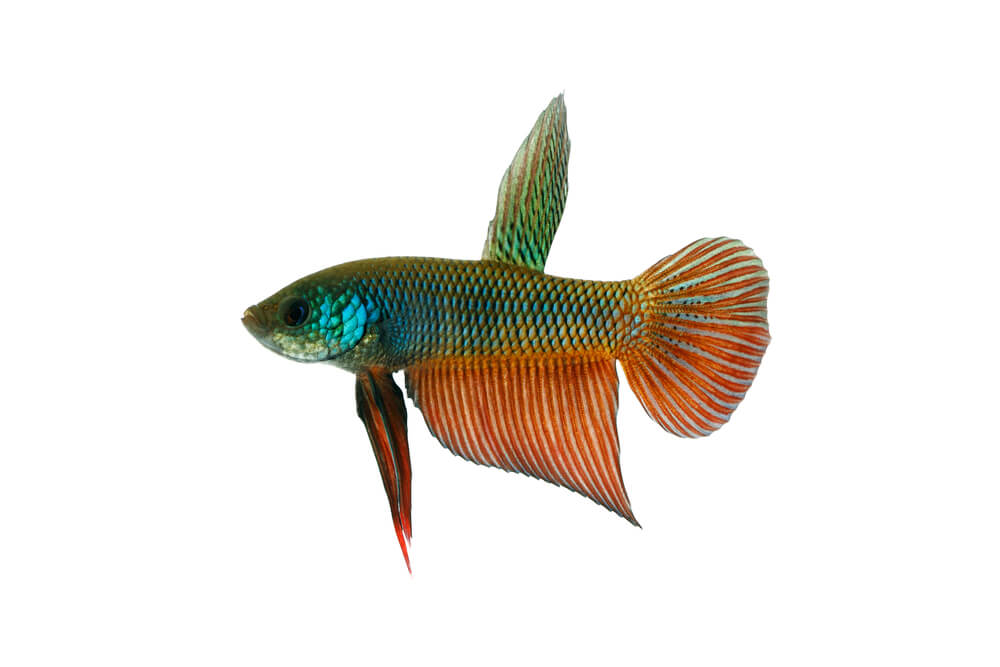
Now take a look at the Betta Mahachai:
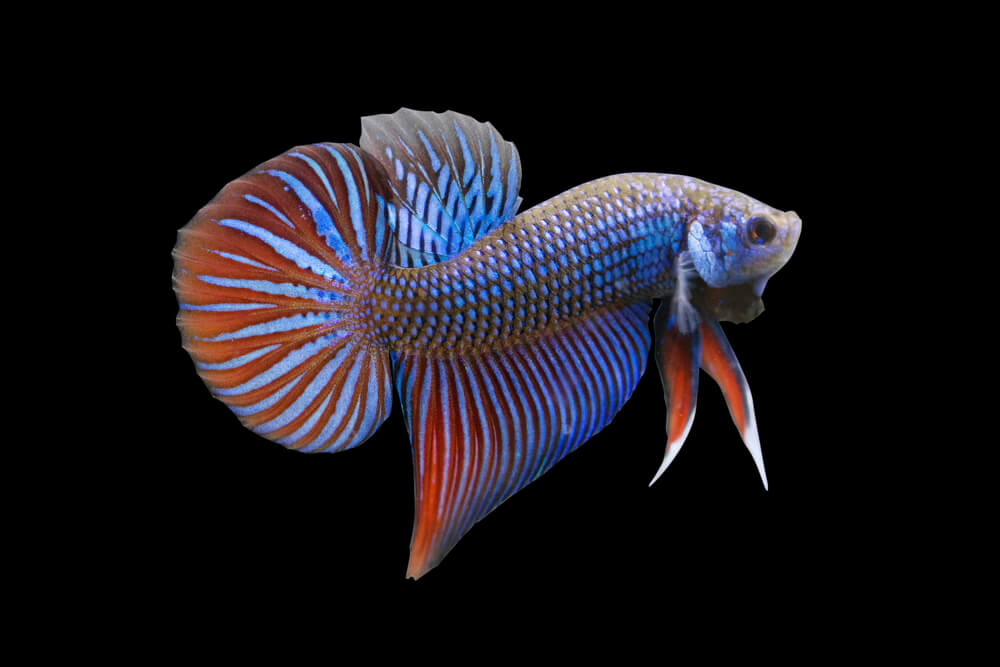
The first difference between Betta Mahachaiensis and Betta Smaragdina is the cheek scaling. Betta Mahachaiensis has plated scales, but Betta Smaragdinas have full mask scales like snakeskin scaling.
Secondly, Betta Mahachaiensis has parallel iridescent green-blue and black ventrals, while Betta Smaragdina has red to orange ventrals. The same color difference is apparent with the anal fins of both types.
How to set up an aquarium for Betta Mahachaiensis
Betta Mahachaiensis can be a good aquarium fish and adjust well inside an aquarium away from their natural environment if the right conditions are met.
We want to set up the tank to be as close to the Betta Mahachaiensis’ natural environment as possible and have to keep in mind two factors:
- Shade
- Plenty of hiding places
- Lid
Shade
Betta Mahachaiensis live in shady waters without too much light. You’ll need to create a shady environment which you can do with different lots of plants. Think floating plants like java moss and java fern. These two will filter out the light from light bulbs in your room or natural light from the windows.
Floating plants also give males areas to build a bubble nest. Betta fish build bubble nests when they are happy or planning to mate.
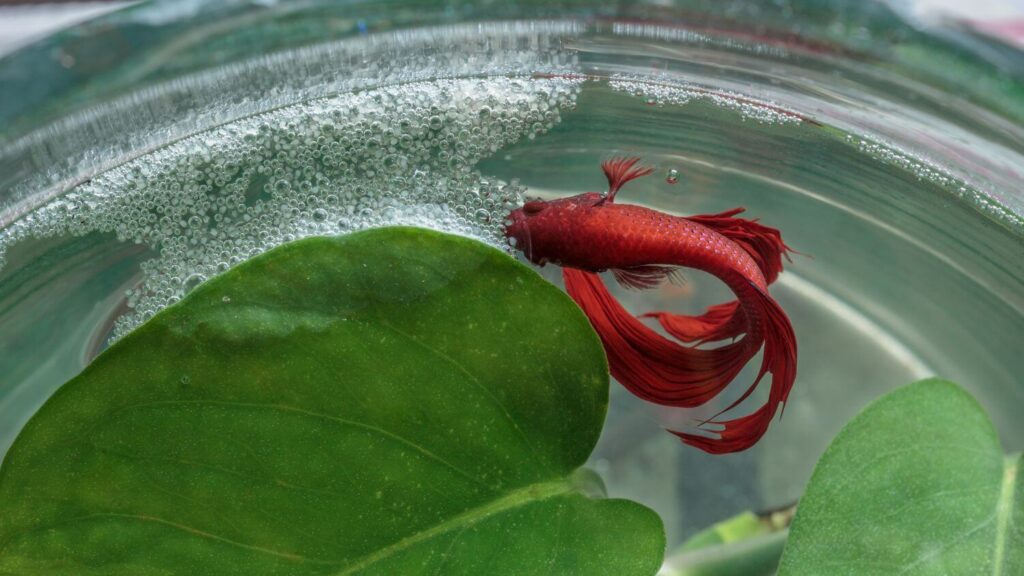
Hiding places
Besides plants, there should be enough hiding places for the fish.
Keep the temperature between 75 to 80 degrees F and the pH between 6.8-7.5.
Lid
Always keep the tank closed with a lid. It prevents the betta from jumping out of the tank. Besides, keeping the top closed helps maintain the same temperature, and the surface air remains humid. This is essential for the labyrinth organ of the fish.
Tank mates
Betta Mahachaiensis are aggressive fish, however, you can still keep other tank mates in the same aquarium as your Betta Mahachai.
Small and peaceful fish like loaches or small cyprinids can be a good companion for Betta Mahachaiensis.
However, you must never keep more than one male in your tank. Multiple males become incredibly territorial and aggressive. The hostile environment is dangerous and can lead to severe injury or death.
Breeding
Setting up a breeding tank for Betta Mahachaiensis will require some extra care. You must ensure the aquarium is big enough and creates a similar environment to the one they are used to living in (minimum 10 gallons for one fish).
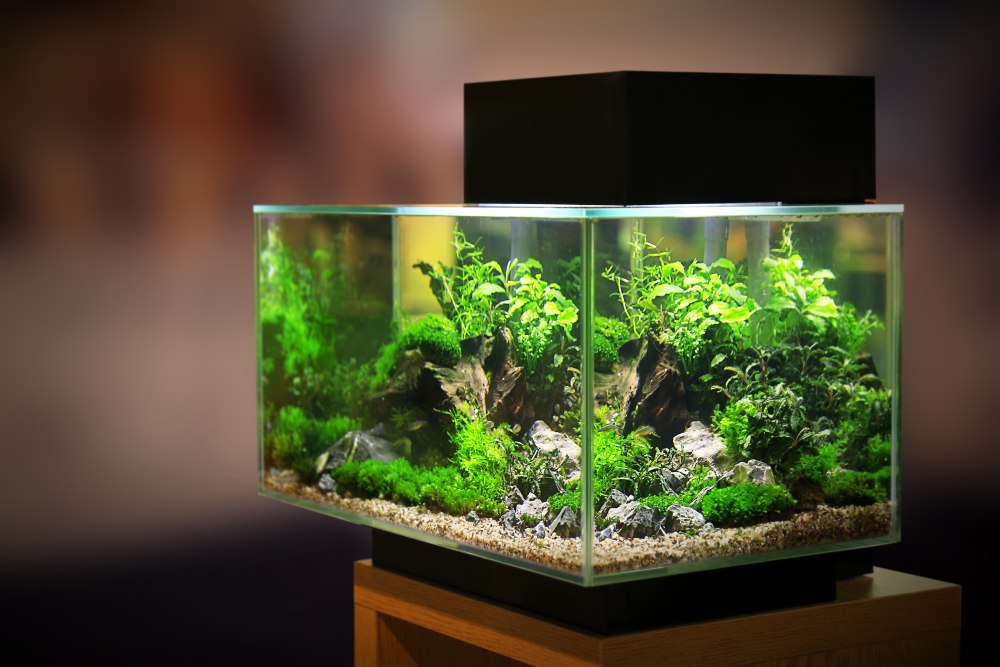
The aquarium should be at least 10 gallons. If you keep a pair for breeding, the tank capacity should be around 20 gallons. You can try keeping one male and one female together, so long as they don’t fight.
If you notice the pair isn’t getting along, separate them and try again another day. If they don’t get along after a few attempts, you may need to try breeding a different pair. As soon as they mate and the female betta releases the eggs, put her in a separate tank. The male betta will care for the eggs in the bubble nest he built until they hatch.
What do Betta Mahachaiensis like to eat?
Betta Mahachaiensis are meat-eaters and enjoy live foods like bloodworms, mosquito larvae and frozen foods like daphnia.
As for dry fish food, they might not be so keen to take that, especially if they are used to living in the wild. Talk to your local fish store to see what they have in stock that you can pick up to feed your betta fish.
Wrapping up
If you love seeing beautiful fish in your aquarium, then Betta Mahachaiensis is a perfect addition. This bluish-green wild betta requires a little extra care, but they can adjust well outside the brackish water of their natural habitat.
FAQs
Like Betta Splendens, Betta Mahachaiensis can live in a community tank together provided the tank is large enough, not crowded, and the fish have enough hiding places. Avoid placing two males together.
Betta Mahachaiensis are aggressive fish and will fight to the death. Males should be kept in separate tanks from other males to avoid sparring.
